Dehing Patkai often referred to as the “Amazon of the East” is a rainforest that stretches more than 575 sq. km in the Dibrugarh, Tinsukia and Charaideo districts of Assam, India. The thick forest further spreads over the Tirap and Changlang districts of Arunachal Pradesh. Dehing Patkai National Park is famous for its largest stretch of tropical lowland rainforests in India covering an area of 231.65 km2 of Dehing Patkai rainforest. It was first declared as a Dehing Patkai Wildlife Sanctuary covering an area of 111.19 sq. km on 13th June 2004 and later upgraded to a national park on 13 December 2020.
The Forest Department of Assam officially notified it on 9th June 2021 as Dehing Patkai National Park making it the 7th national park of Assam and the 105th National Park of India.
The Dehing Patkai National Park so has recorded nearly 50 mammal species, 47 reptile species, 310 butterfly species and about 293 bird species belonging to 174 genera and 51 families. The common resident bird species are (63.7%), winter visitors (23.1%), and summer visitors (2.5%). Among them, around 10.7% are altitudinal migrants, originating primarily from the elevated regions of the western, central, and eastern Himalayas. These migratory birds find sanctuary within the rainforest, adding to its remarkable biodiversity and highlighting the connectivity of diverse ecosystems across different altitudes.
Dehing Patkai National Park location
Dehing Patkai National Park is located in the district of Dibrugarh, Tinsukia and Charaideo of Assam, India. The park is adjacent to the Namdapha Wildlife Sanctuary nestled at the foothills of the majestic Patkai Hill Ranges along the serene banks of the meandering River Dehing. The Dehing Patkai rainforest has three contiguous patches in the Jeypore Reserved Forest, Upper Dihing Reserved Forest, and Dirak Reserved Forest. The Dehing Patkai National Park is 32.6 Km distance from Tinsukia via NH315. The nearest cities are Khonsa, Naharkatia, Duliajan, and Dibrugarh. The park Coordinates 27.3432° N, 95.5425° E.
The Park is administered by Soraipung Range of Digboi Division and Jeypore Range of Dibrugarh Division, both falling under Conservator, Eastern Assam Circle. The Conservator, Eastern Assam Circle is the Director of Dehing Patkai National Park.
- Location, Area and Name
- District- Dibrugarh, Tinsukia and Charaideo of Assam, India.
- Range- (1) Soraipung Range of Digboi Forest Division, (2) Jeypore Range of Dibrugarh Forest Division.
- Park Area- (1)13th June 2004, declared as Dehing Patkai Wildlife Sanctuary covering an area of 111.19 sq. km. (2) 9th June 2021, upgraded and declared as Dehing Patkai National Park covering a total of 231.65 sq. km.
- Name- Dehing Patkai National Park.
Dehing Patkai National Park Google Map
Dehing Patkai National Park Map
Believed to be the last remaining contiguous stretch of tropical lowland rainforest area in Assam. Dehing Patkai rainforest spreads up to the Deomali elephant reserve in Arunachal Pradesh and is administratively divided into Jeypore Reserved Forest, Upper Dihing Reserved Forest and Dirak Reserved Forest covering an area of 575 sq. km. The Dehing Patkai National Park areas include Jeypore Reserve Forest and Upper Dehing Reserve Forest (West Block). However, the Forest Villages area under Forest Conservation Act excluded and short stretches of Dirak and Buri Dehing rivers fall under this contiguous patch included in the Dehing Patkai National Park.

Dehing Patkai National Park Establishment
At first, Dehing Patkai National Park was established as the Dehing Patkai Wildlife Sanctuary, later it was designated as the Dehing Patkai Elephant Reserve as part of Project Elephant. The potential of Dehing-Patkai as a wildlife sanctuary was recognized in the late 1980s during a primate survey (Choudhury, A. U. (1989). Primates of Assam: their distribution, habitat and status.), leading to its identification as the “Upper Dehing Wildlife Sanctuary.” Subsequently, a study on the white-winged wood duck in the early 1990s revealed its global importance as a habitat for this species, and it was recommended to be upgraded to the “Upper Dehing National Park.”
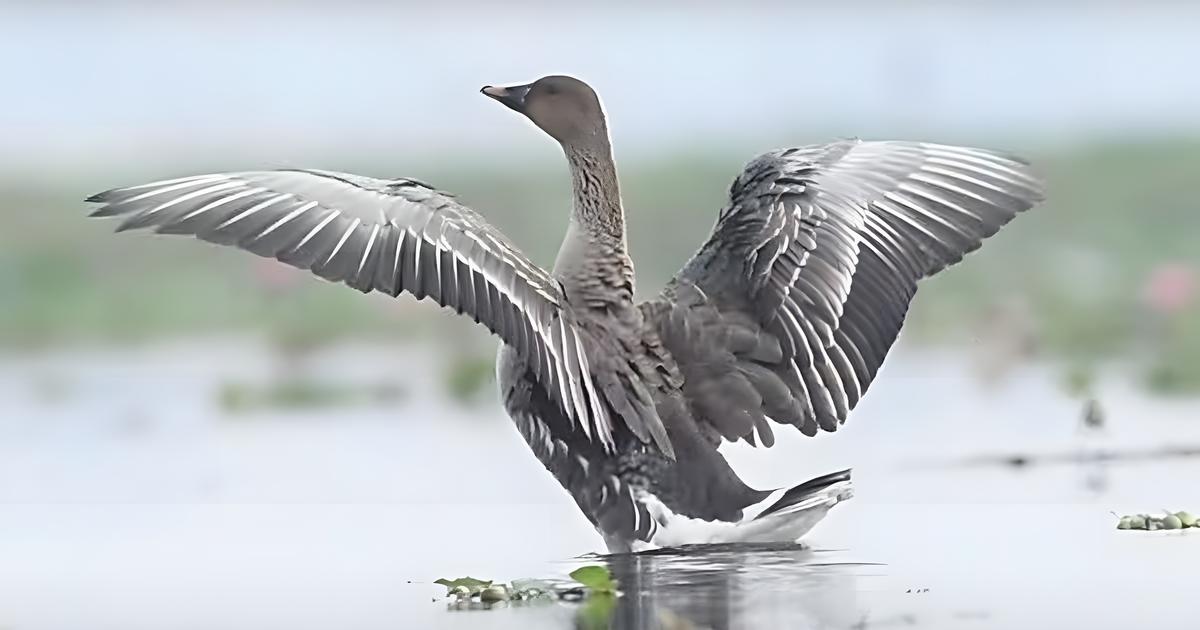
In the late 1990s, continuous and unplanned extraction of forest resources, tea plantations, Coal extraction and other mining activities in these rainforests reduced most of it to completely denuded small patches scattered and fragmented throughout the region.
It was Nature’s Beckon, an environment activist group in North-eastern India that came to intervene to rescue this last remaining contiguous patch of rainforests of Brahmaputra valley. Nature’s Beckon gained recognition for its contribution to biodiversity conservation from the world and earned faith from the masses fomentation its grassroots started its conservation activities in and around these forests in 1992.
Earlier no one ever talked about these immensely biodiverse rainforests of this part of the planet which has its unique place in natural history.
In 1994, Nature’s Beckon launched its campaign to protect from any future destruction of the contiguous rainforests of 500 sq. km. of Upper Assam located in Dibrugarh and Tinsukia districts spread across Joypur Reserve Forest, Upper Dihing Reserve Forest and Dirak Reserve Forest.
Nature’s Beckon embarked on the challenging task of mapping the biodiversity of these rainforests. With limited scientific data available, they conducted comprehensive surveys to facilitate conservation efforts. Their awareness campaigns ignited a movement involving communities, students, and local residents. This marked the birth of the first-ever rainforest conservation movement of Assam focused on protecting the last remaining contiguous patch of tropical rainforest in the region.
In 2001, Nature’s Beckon organized the first-ever highly successful International Rainforest Festival in Jeypore. Attended by the then Chief Minister of Assam, Tarun Gogoi and representatives from 12 different countries, this festival garnered support from wildlife conservationists, biologists and intellectuals worldwide. It brought the rainforests of Assam into the global spotlight, recognized as one of the world’s richest forests. The rainforest conservation movement in Assam gained widespread coverage in local and national newspapers, magazines and electronic media becoming one of India’s most well-documented conservation movements.

Nature’s Beckon, led by Soumyadeep Datta, fought tirelessly, supported by dedicated members, fringe communities, writers, poets, journalists and nature enthusiasts. Eventually, on June 13, 2004, the State Government declared the creation of Dihing Patkai Wildlife Sanctuary covering only 111.19 sq. km of the proposed 500 sq. km rainforest area across Jeypore RF, Upper Dihing RF and Dirak RF. Despite this partial success, Nature’s Beckon urged the government to include the remaining rainforest area in the sanctuary as soon as possible.
Nature’s Beckon tirelessly trained and educated locals about rainforest conservation, organized nature camps, bird-watching training and environmental education in schools and colleges. They remained vigilant in protecting the Dihing Patkai Wildlife Sanctuary and its surrounding forests. Several important books, such as “Rainforests of Assam,” “Namchangor Antexpur,” and “Dihing Patkai Abhyoronyo,” were published to spread accurate information about these rich rainforests. Nature’s Beckon is committed to providing complete protection to the 500 sq. km of contiguous rainforests in Upper Assam.

Despite the government’s inability to develop a suitable eco-tourism model and the lack of interest among citizens, the rainforests in Dibrugarh and Tinsukia districts gained attention in 2020.
In April 2020, a social media campaign brought attention to the remote rainforests of Assam. The campaign highlighted the threat of new coal mining in the Dihing Patkai Wildlife Sanctuary approved by the NBWL (National Board of Wildlife), Government of India.
RTI information confirms that coal mining in the area has been ongoing without formal clearances and renewals. In 1973, North Eastern Coalfields (NEC), a subsidiary of Coal India was granted a 30-year lease. The lease expired in 2003. As per the Forest Conservation Act, 1980, Coal India should have obtained clearance from the forest department but it failed to do so. Despite the creation of the Dehing Patkai Elephant Reserve in 2004, Coal India Limited (CIL) continued mining. In 2012, NEC requested a fresh lease but it was rejected. In 2019, Coal India reapplied for clearance for 98.59 hectares out of which mining was already taking place in 73 hectares.
In April 2020, amidst the nationwide lockdown imposed due to the COVID-19 pandemic, a conditional clearance was granted for a coal mining project in the Saleki Proposed Reserve Forest (part of the Dehing Patkai Elephant Reserve Forest). In its 56th meeting conducted through a video conference, the National Board of Wild Life (NBWL) under the Union Ministry of Environment, Forest and Climate Change approved the project to fulfilling 28 conditions.
The decision to approve coal mining in Dehing Patkai rainforest sparked massive protests both online and offline. The hashtag #IAmDehingPatkai and a corresponding Facebook page gained significant attention. Prominent figures like Adil Hussain, Angarag Papon Mahanta, and Joi Barua expressed their concerns. The ‘Forest Man of India’ Padma Shri Jadav Payeng appealed to the Union government to change the decision.
Students from colleges and universities including Guwahati University launched digital campaigns with banners, cartoons, and hashtags like #SaveDehingPatkai. As a result of the ongoing protests, the North Eastern Coalfields (NEC) temporarily suspended mining operations in the Dehing Patkai Wildlife Sanctuary.

On 6th July 2020, the Assam government decided to upgrade the sanctuary to a national park for better conservation An inquiry panel led by retired Gauhati High Court Judge Brajendra Prasad Katakey was appointed to investigate allegations of illegal mining activities since 2003.
On December 1, 2020, the sanctuary was preliminarily notified as a national park and official proclamations were issued by the deputy commissioners of Tinsukia and Dibrugarh on January 1, 2021. This decision was made after no claims were received and it followed the proper procedures outlined in the Wildlife (Protection) Act, 1972. The Forest Department of Assam officially declared it a national park on 9th June 2021.
Dehing Patkai National Park Geography
The geography of Dehing Patkai National Park showcases the beauty of its pristine rainforests, hilly terrain and vibrant ecosystems making it a valuable conservation area and a natural treasure of Assam. The abundance of forest cover in the area continues to be a significant factor in the presence of various ethnic communities from Assam within the boundaries of the Dehing Patkai National Park. These communities include the Singphos, Tai Ahoms, Tai Phakes, Tai Khamyangs, Khamtis, Morans, Chutias and others. Many Nepalis and Tea garden tribe people also live surrounding the Dehing Patkai Park.
The topography of Dehing Patkai National Park is characterized by dense forests, undulating hills, numerous streams and small rivers that crisscross the region. The Park derives its name partly from Dihing River which flows through the park.
Dehing Patkai National Park Climate
Dehing Patkai National Park has a predominantly tropical climate falling under the Köppen climate classification group A. Its climates are categorized by hot temperatures throughout the year with a monthly typical temperature of 18 °C (64.4 °F) or higher even in the coolest month. Dehing Patkai National Park experiences a tropical climate with high rainfall exceeding 4,000 mm annually. Monthly precipitation levels consistently exceed 60 mm ensuring a constant water supply for the lush rainforest and diverse wildlife within the park. The abundant moisture supports the growth of various plant species and sustains the park’s network of streams and rivers.
Flora and Fauna of Dehing Patkai National Park
1. Flora
The rainforests of the Dehing Patkai National Park exhibit a distinctive multi-storeyed structure, with trees ranging in height from 65 to 150 feet. The towering top canopy is predominantly occupied by the majestic Holong tree (Dipterocarpus macrocarpus) which can reach heights of over 46 meters. Holong is the State Tree of Assam. Iron Wood trees dominate the middle canopy, while another notable giant in the top canopy is the Segun tree.
The understorey is inhabited by species like Garcinia lanceifolia, Michelia muni, Baccaurea sapida, Bischofia javanica, Myristica limifolia while the shrub and herb layer features Glochidion spp., Alpinia spp., Mallotus philippinensis, wild banana, tree fern and pepper plants.
The ground cover is characterized by Leea, Melastoma and other species. These diverse layers of the rainforest make available a rich habitat for numerous exotic species of orchids, bromeliads, ferns, epiphytes, climbers and lianas. The humid forest environment supports a wide range of flora, including important tree species like Hollong, Mekai, Dhuna, Uriyam, Nahar, Chamkothal, Bher, Hollock, Nahor, Ou-tenga (elephant apple), and different species of Ficus.
According to Champion and Seth’s classification, the forest type in this region is Upper Assam Valley tropical evergreen forest. The rainforest has notable over wood species such as Castanopsis indica, Dipterocarpus macrocarpus, Shorea assamica, Mesua ferrea, Vatica lanceaefolia, Dysoxylum binectiferum, Amoora wallichii among others.

2. Fauna
This rainforest habitat to 7 species of non-human primates. The Hoolock Gibbon found in Dehing Patkai National Park is the only species of non-human ape found in India. The Hoolock Gibbon is critically endangered and relies on this rainforest as one of its last remaining natural habitats. Other endangered mammal species inhabit in this dense rainforest are Tigers, Leopards, Asian Elephants, Gaurs, Sambars, Sloth Bears, Clouded Leopards, Crab-eating Mongooses, Flying Squirrels, Pangolins and more.
As this National Park a rainforest is incredibly rich in biodiversity making it an ideal habitat for non-human primates. The primate species found here include Assamese Macaques, Stump-tailed Macaques, Slow Lorises, Pig-tailed Macaques, Capped Langurs, Rhesus Monkeys and Hoolock Gibbons. In addition to these primates, the park boasts a wide variety of mammals, reptiles and butterflies. There have been records of nearly 50 mammal species, 47 reptile species and 310 butterfly species in this rainforest.
Noteworthy mammal species found within this national park include the Marbled Cats, Bengal Tigers, Red Giant Flying Squirrels, Small-toothed Palm Civets, Crab-eating Mongooses, Clouded Leopards, Binturongs, Asian Golden Cats, Red Serows, Asian Elephants, Dholes (Asian Wild Dogs), Himalayan Black Bears, Gaurs, Leopard Cats, Crestless Himalayan Porcupines, Sambars, Chinese Pangolin, Jungle Cats, Malayan Sun Bears, Asiatic Bush-tailed Porcupines, Barking Deer and Leopards.

3. Avifauna
Locally known as Deohaanh, the White-winged Wood Duck (Asarcornis scutulata) or White-winged Duck is an endangered species of duck and is the state bird of Assam found in Dehing Patkai National Park. It is estimated that only 800 white-winged ducks are left in the world.
The Dihing Patkai rainforest is also a haven for a remarkable variety of bird species totalling 293. These birds belong to 174 genera and 51 families showcasing the rich diversity of avian life. Among them, the majority are resident species comprising 63.7% of the bird population, while 23.1% are winter visitors and only a small portion 2.5%, are summer visitors. Additionally, around 10.7% of the birds are altitudinal migrants, making their way from the elevated landscapes of the western, eastern and central Himalayas.
The avifauna of Dihing Patkai includes an impressive array of species such as the White-backed vulture, Oriental darter, Slender-billed vulture, Red-breasted parakeet, Great pied hornbill, Grey peacock pheasant, Hill myna, Pied falconet, Lesser adjutant, Yellow-vented warbler, Black baza, Oriental bay owl, Osprey, Kaleej pheasant, White-cheeked hill partridge, Scaly thrush, Mountain imperial pigeon, Wreathed hornbill, Pale-capped pigeon, Green imperial pigeon, Tawny fish owl, Brown hornbill, Greater spotted eagle.

Best Time to Visit Dehing Patkai National Park
The best time to visit Dehing Patkai National Park is during the winter and spring months.
1. Winter (November to March):
During the period from November to March which coincides with the arrival of migratory birds in Dehing Patkai, it is recommended to venture into the field early to witness the mist make way as the forest slowly comes to life. Birds in Dehing Patkai are most active from 7.00 am to 11.00 am and again from the afternoon until sundown. This period offers an excellent opportunity to observe the diverse array of migratory birds that grace the National Park. Furthermore, during the winter months visitors can enjoy the park without the hindrance of rain or waterlogging, making it an ideal time to explore and appreciate the beauty of Dehing Patkai.
2. Spring (March-April):
Experience the magic of the rainy season in Dehing Patkai National Park where new growth and breeding activities captivate birdlife. Listen to the melodious calls of barbets and cuckoos and seize the opportunity to spot rare species like the Square-tailed Drongo-Cuckoo, Violet Cuckoo, Blue-eared Barbet, Common Hawk, Emerald Cuckoo and Hodgson’s Hawk.
How to go Dehing Patkai National Park
1. By Air:
The closest airport to Dehing Patkai National Park is Dibrugarh Airport (IATA Code: DIB), situated approximately 80 km away. It can be reached by a convenient 1 hr 51 min drive via NH315 or a slightly longer 2-hour journey taking NH215 and Duliajan-Digboi Road. Dibrugarh Airport has regular flights connection from major cities New Delhi, Kolkata, Chennai, Mumbai, Bangalore and Hyderabad. Airlines such as Air India, Indigo and Vistara operate flights to Dibrugarh ensuring convenient access for travelers.
2. By Rail:
The nearest railway station from the Dehing Patkai National Park is New Tinsukia Junction (NTSK) 38.3 km 1-hour drive and Dibrugarh (DBRG) at a distance of approx. 70 km away.
3. By Road:
Dehing Patkai National Park is well-connected with Dibrugarh and Tinsukia via NH315 and NH215.
Where to Stay
There are several forest guest houses at Soraipung, Jeypore and Digboi managed by the state forest department. The Jeypore Guest House (also call Inspection Bungalow) is located at the end of a lane right next to the Dehing River and is 2km from the park’s entry gate.
Securing a room at any of the forest guest houses might pose a challenge. To make a reservation, it is necessary to email the District Forest Officer in Dibrugarh providing your booking details and requirements.
Alternatively, there are many private stays available in Digboi, Duliajan and Tinsukia. Unlike the state-run guesthouses, if you choose other accommodations, it is advisable to start your journey an hour earlier to ensure you reach the forest on time.
Conclusion
Overall, The Dihing Patkai National Park is a rainforest treasure trove of flora, fauna and avian biodiversity attracting a wide range of bird species including both resident and migratory populations and serving as a vital habitat for the iconic white-winged wood duck is a symbol of Assam. The Holong tree which can reach heights of over 46 meters is the State Tree of Assam. The network of streams and rivers that flow through the park adds to its ecological significance providing water sources and creating favorable habitats for aquatic life including fish and reptiles.
FAQ
Q.) What is Dehing Patkai National Park famous for?
A. Dehing Patkai National Park also called “Amazon of the East” is famous for its largest stretch of tropical lowland rainforests in India. White-winged Wood Duck is the state bird of Assam found in Dehing Patkai National Park.
Q.) Which river passes through dehing patkai?
A. Dehing River flows through the heart of Dehing Patkai National Park.
Q.) In which state is Dehing Patkai National Park?
A. Patkai National Park is located in the Dibrugarh, Tinsukia and Charaideo district of Assam, India covering an area of 231.65 km2 of 575 sq. km Dehing Patkai rainforest.
Q.) What is the name of 7th National Park in Assam?
A. Dehing Patkai National Park is the 7th National Park in Assam and the 105th National Park of India.
YOU MAY ALSO LIKE
- Orang National Park
- Dibru Saikhowa National Park
- Raimona National Park
- Nameri National Park
- Manas National Park
REFERENCES
- Dihing Patkai National Park’s Official Website: https://tinsukia.assam.gov.in/




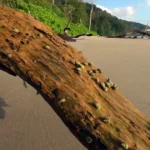
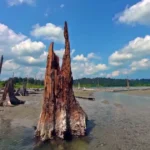

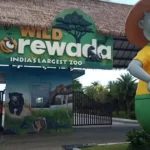
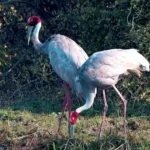

1 thought on “Dehing Patkai National Park”